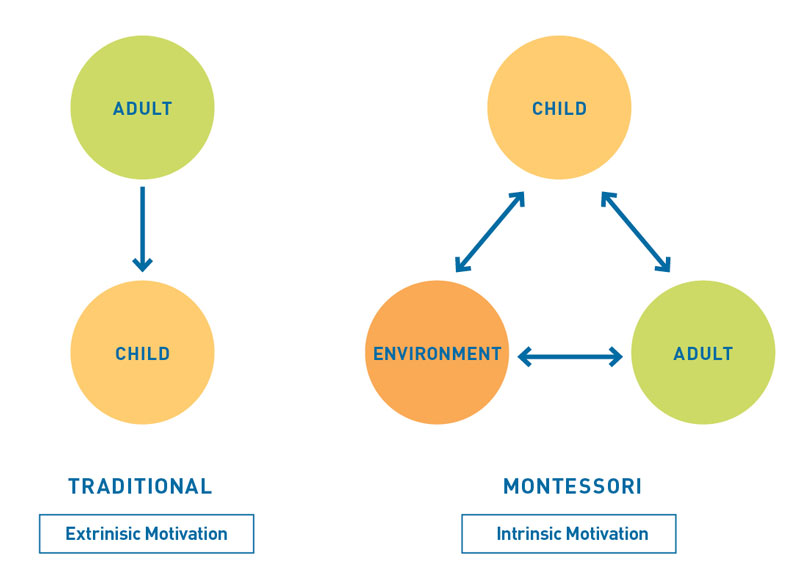Montessori vs. Traditional: What’s the difference?

In a Montessori classroom, the emphasis is on child-centered learning rather than a teacher-directed approach. You won’t find a teacher standing in front of a row of desks, presenting a lesson to a group of children.
Children are free to choose their work and explore on their own, knowing the teacher will provide support and guidance when needed. Teachers link each student with work and activities that match their interests, needs, and developmental level.

In a nutshell, Montessori Learning IS NOT…
- Focused on rote drill and memorization.
- A teacher reciting a lesson to a large group of students.
- Textbooks and worksheets.
Montessori Learning IS…
Students exploring Montessori “works”—engaging materials designed to teach valuable academic skills while nurturing intrinsic motivation. Montessori works are self-correcting, designed so that the child can easily recognize, correct, and learn from an error without adult assistance. Students are given large blocks of time to actively engage with each work until they have reached a place of mastery, which develops their ability to focus, hone fine and gross motor control, and problem-solve independently.
In a Montessori classroom, students become actively engaged in their studies rather than passively waiting to be taught. They are encouraged to try new things and think for themselves while building valuable academic skills.
Montessori students naturally develop an internal sense of purpose and motivation. They experience greater self-confidence, discipline, and agency—values that will serve them well in high school, college, and into their adult lives.




















